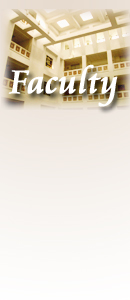|

|
 |
Education |
- 1983/09-1987/09 Ph.D. in Physics, Virginia Polytechnic Institute & State University, USA
|
 |
Professional Experience |
Current
position¡G
- 1998/08 - present, Professor of Physics, National Tsing Hua University
Experience¡G
- 1994/07 - 1998/08, National Tsing-Hua University,Physics,Associate Professor
- 1993/10 - 1994/08, National Tsing-Hua University,Physics, Visiting Specialist
- 1992/09 - 1993/09, Ames Lab, Iowa State University, USA Postdoc
- 1990/09 - 1992/09, Lab. de phys Nucl., Univ. de Montreal, Canda Postdoc
- 1987/09 - 1990/08, Theory Group, TRIUMF, Canada Postdoc
|
 |
Research Fields |
- Particle Physics Phenomenology
|
 |
Research Interests and achievement |
|
Updated on September 3, 2006
The standard model (SM) of the strong and electroweak interaction has had enormous success in explaining all relevant existing experimental data. However, it is generally anticipated that there is new physics in higher energy regions. In addition to a large number of free parameters, the SM leaves too many questions un-answered. Why are there three families? What is the explanation for fermion masses in view of the tremendous range of their values? What is the origin of CP violation? The answers to these questions and many others lie beyond the SM. Although, to date, there are no disagreements between theory and experiment which might give us some clue as to what may lie beyond the SM, it is important to keep searching for discrepancies between the SM and experiment. The ongoing and the next generation of experiments may provide clues as to what form the new physics will take. Furthermore, theorists must continue to look for models which might give answers to some of the above questions, and which can be tested experimentally. My research interests are (1) to look for new ways of testing the SM, (2) to use experimental data to put limits on physics beyond the SM, and (3) to construct models of new physics, and to examine their experimental consequences.
|
 |
Selected
Publications |
- [2004] C.Q. Geng , I-Lin Ho and T.H. Wu, ¡§Axial Vector Form-Factors for K(l 2 g ) and p (l 2 g ) at O(p 6 ) in chiral Perturbation Theory¡¨, Nucl. Phys. B 684 , 281 (2004).
- [2005] C.Q. Geng and Y.K. Hsiao, `` Radiative Baryonic B Decays'', Phys. Lett. B610 , 1152 (2005).
- [2006] C.H. Chen and C.Q. Geng, `` Charged Higgs on B ¡÷£n £h and B ¡÷ P(V) l ,¡¨ J. High Energy Phys 0610 , 053 (2006) .
- [2007] C.Q. Geng ,Y.K. Hsiao and J.N. Ng, `` Direct CP violation in
 , '' Phys. Rev. Lett. 98 , 011801 (2007) . , '' Phys. Rev. Lett. 98 , 011801 (2007) .
- [2007] C.S. Chen, C.Q. Geng, J.N. Ng, J.M.S. Wu, `` Testing Radiative Neutrino Mass Generation at the LHC,¡¨ J. High Energy Phys . 0708 , 022 (2007).
- [2007] C.Q. Geng, S.H. Ho and J.N. Ng, ``Neutrino number asymmetry and cosmological birefringence,¡¨ Journal of Cosmology and Astroparticle Physics 0709, 010 (2007).
- [2007] C.H. Chen and C.Q. Geng, ``Unparticle physics on CP violation,¡¨ Phys. Rev. D76 , 115003 (2007).
- [2008] K. Bamba, C.Q. Geng and S.H. Ho, ``Hypermagnetic Baryogenesis,'' Phys. Lett. B664, 154 (2008) .
|
|
Top¢xBack
|
|
|
